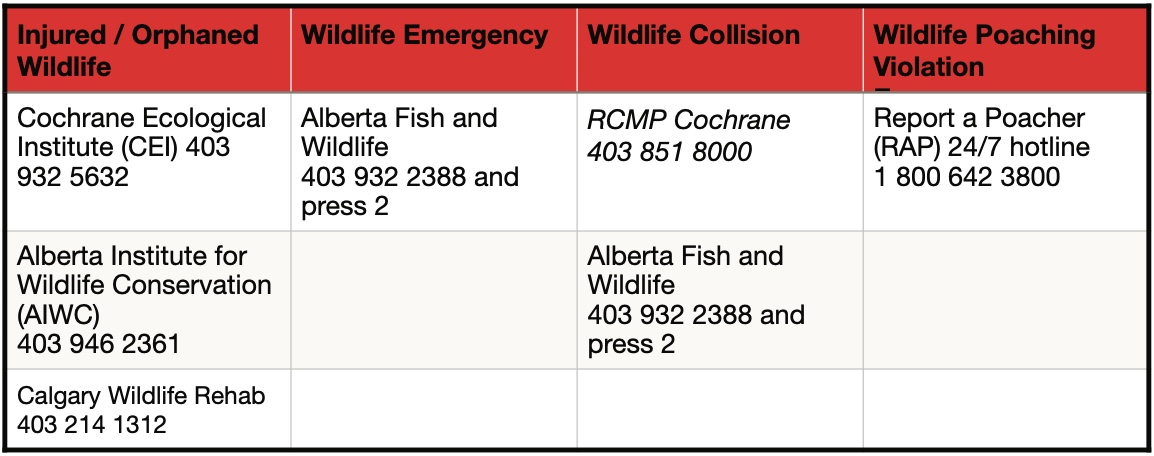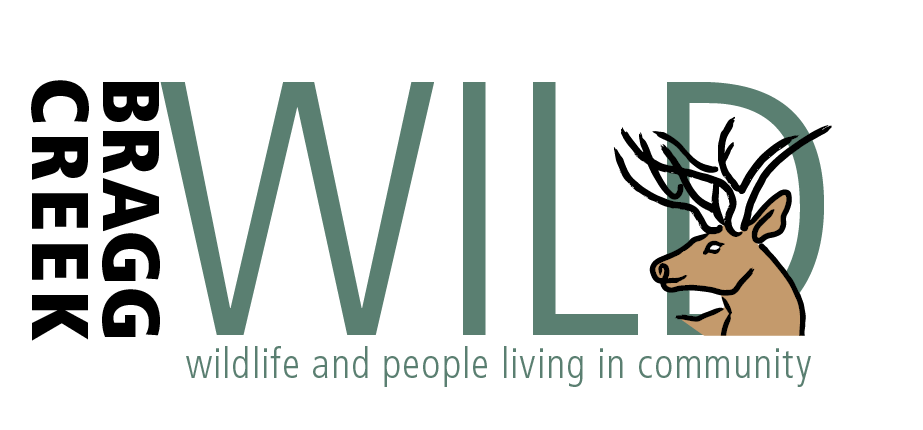Helping Injured Wildlife
We have come upon an injured owl or perhaps we have collided with a deer. What steps should we take to help ourselves and/or the wildlife?
First we stop and assess. Observe the wildlife from a safe distance to determine the extent of its injuries and the level of distress it’s experiencing.
Next we ask a few questions. What do we see in the surrounding environment? Where is the animal located? Is the animal alone? Taking photos of the injured wildlife and surrounding area will help the agency we contact determine what is required.
Lastly, we decide who to call, a rehabilitation centre or the authorities?
Emergency
In an emergency, for example you may encounter an injured wild animal that poses immediate danger to human safety, it is important to contact the wildlife authorities. Alberta Fish and Wildlife Enforcement Branch will assess the situation and action a plan to address the emergency. While waiting for assistance, maintain a safe distance from the injured animal to avoid causing further stress or harm, keeping in mind that wildlife can act unpredictably when injured, so it’s essential to exercise caution.
Collision
You’re involved in a wildlife collision and the animal died on impact. Reporting the incident to the wildlife authorities means it can be recorded. This information provides valuable data for future conservation purposes such as identifying where mitigation is required for stretches of road that see regular wildlife collisions.
Injured and poses no threat
An animal is injured, but not in immediate danger and does not pose a threat to human safety. For example, a bird with a wing injury. In these circumstances a local wildlife rehabilitation centre is here to help. Organizations such as CEI in Cochrane specialize in providing medical care and rehabilitation to injured wildlife. They will provide you with instructions as to how to keep the wildlife safe. For example, they might ask you to keep the surrounding area as calm and quiet as possible. To keep children and pets away from the injured animal to avoid causing additional stress. They may ask you to cover the animal’s head with a blanket, towel, or any other piece of cloth to create a sense of darkness and calmness, this may help keep the animal still and decrease its stress until a wildlife technician can get there.
Orphaned
A young animal appears to be orphaned. Here too it’s best to contact a wildlife rehabilitation centre. They have the expertise to assess the situation and provide appropriate advice and care or, facilitate reunification with parents, if possible. Remember some species such as deer, leave their young for stretches of time to forage for food. Keep watch for a while. Many species return to their young near dawn or dusk.
Regardless of the situation or who you call, wildlife authorities and wildlife rehabilitation centres often work together and will refer you to the appropriate organization based on the situation and, to ensure the best possible outcome for the injured wildlife.
Bragg Creek Wild – www.braggcreekwild.ca
braggcreekwild@gmail.com – 403-200-9961
People and wildlife living in community
 Please visit our wild smart page www.braggcreekwild.ca for more information.
Please visit our wild smart page www.braggcreekwild.ca for more information.


























